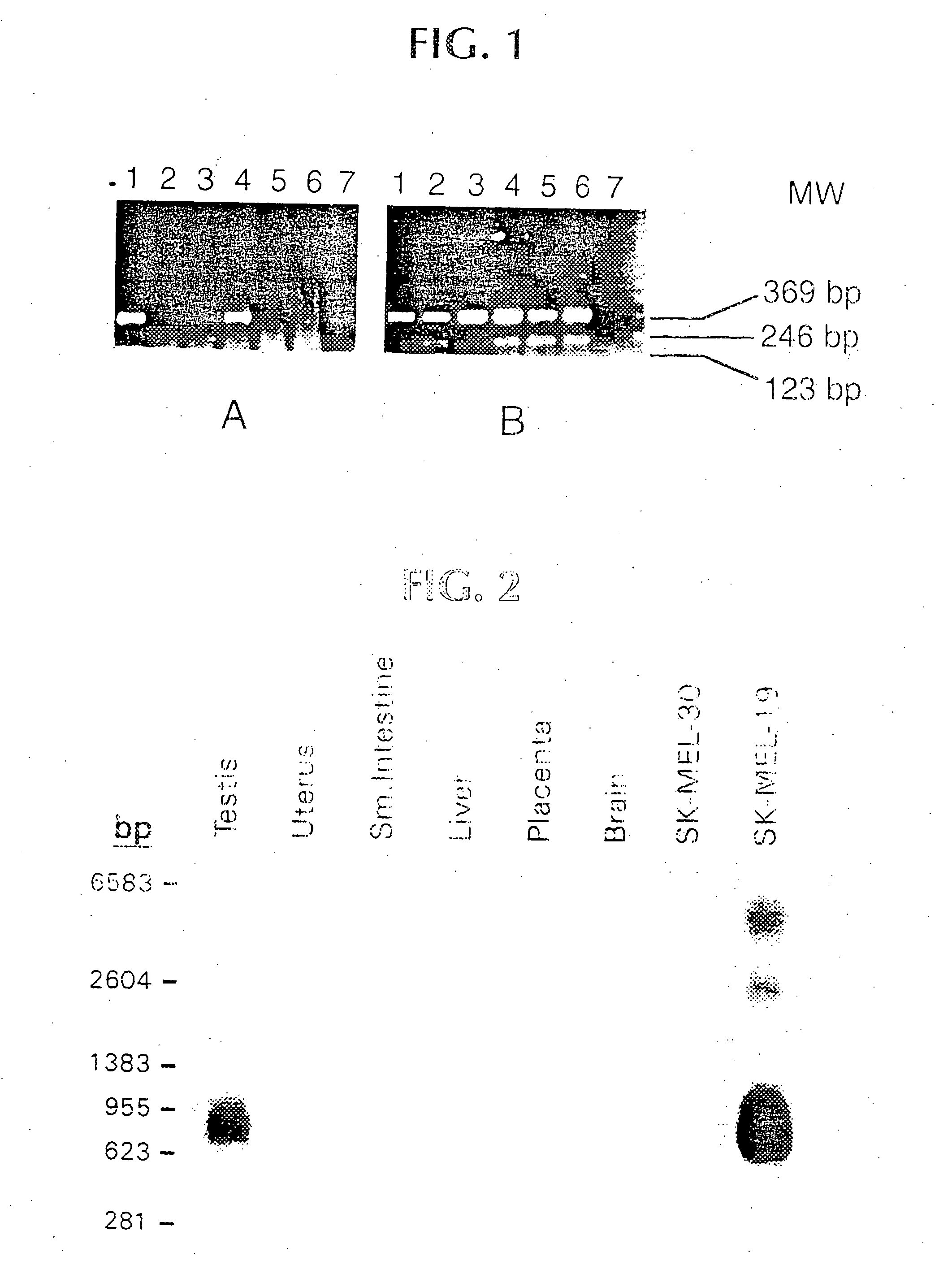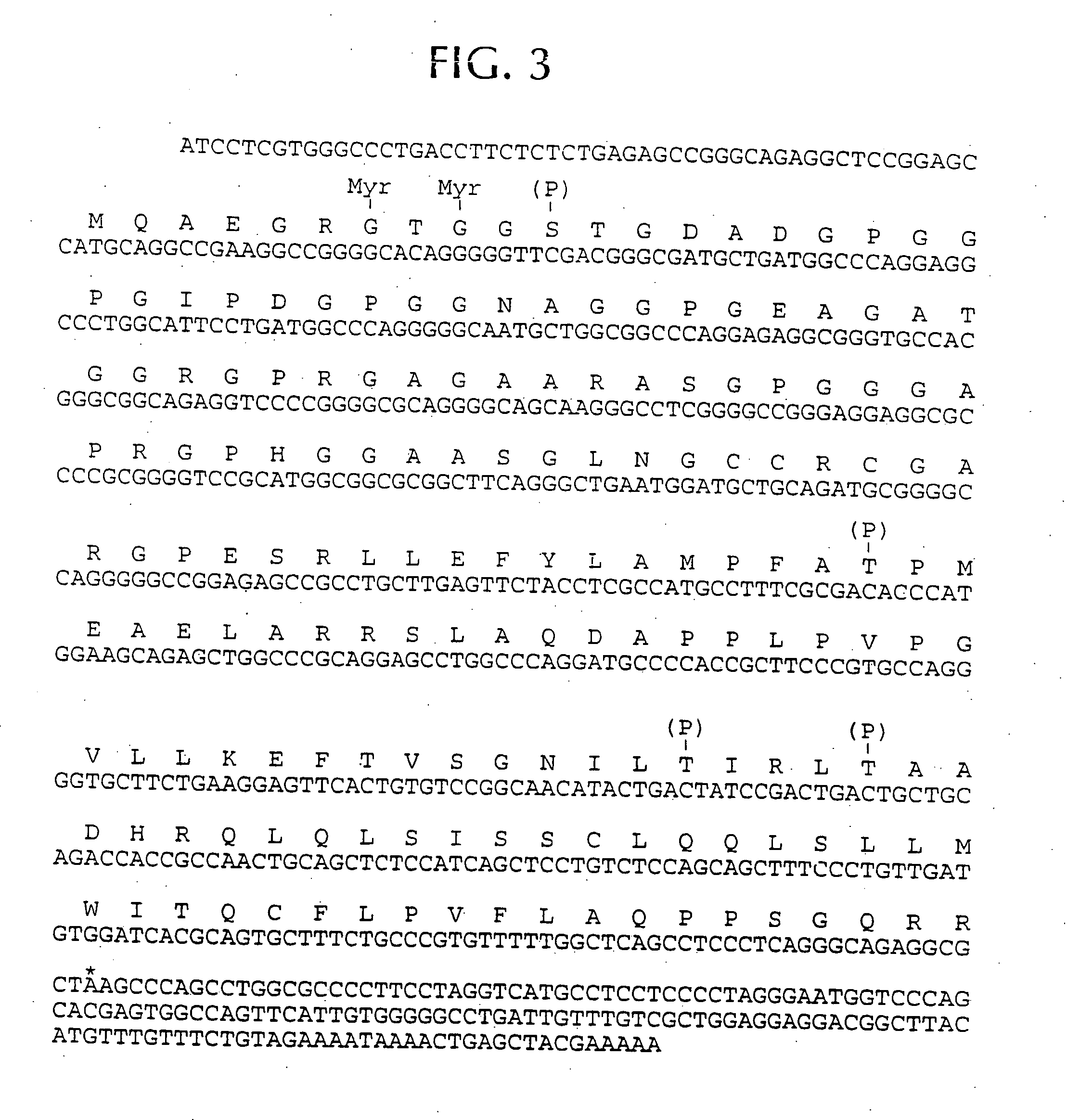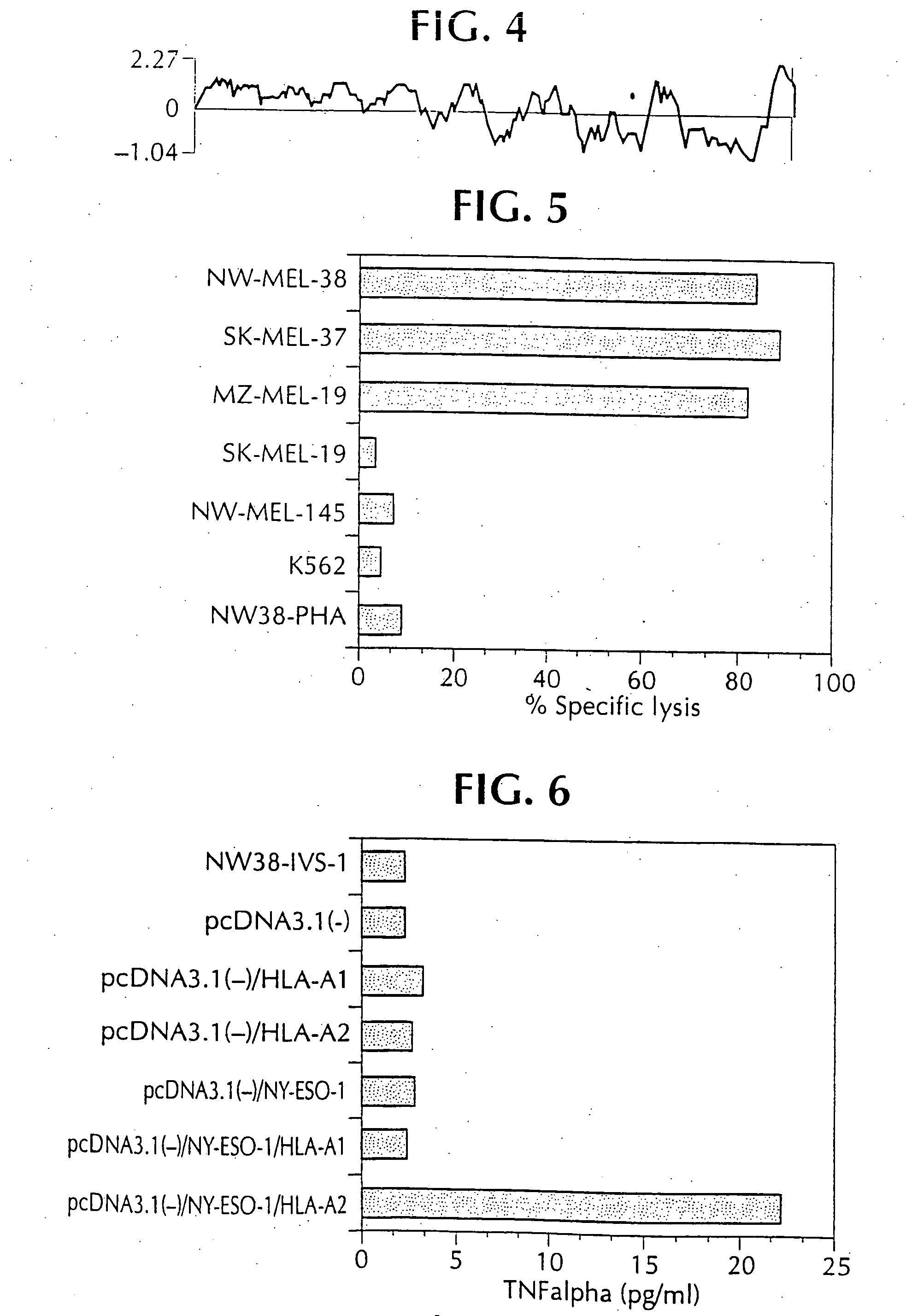Isolated peptides corresponding to amino acid requirements of NY-ESO-1, which bind to MHC Class I and MHC Class II molecules, and uses thereof
a technology of ny-eso-1 and amino acid requirements, applied in the field of hla binding peptides, can solve the problems of inability to know the exact method of purification, time-consuming and expensive, and inability to meet the amino acid requirements of ny-eso-1,
- Summary
- Abstract
- Description
- Claims
- Application Information
AI Technical Summary
Problems solved by technology
Method used
Image
Examples
example 1
[0017] Total RNA was extracted from a snap frozen specimen of well to moderately differentiated squamous cell cancer of the esophagus, using well known methods. See, e.g., Chomzynski, J. Analyt. Biochem. 162: 156-159 (1987), for one such method. This RNA was used to prepare a cDNA library which was then transfected into λZAP phage vectors, in accordance with the manufacturer's instructions. The λZAP library was then transfected into E. coli, yielding 1.6×106 primary isolates.
[0018] The SEREX methodology of Sahin, et al., Proc. Natl. Acad. Sci. USA 92: 11810-11813 (1995), incorporated by reference, was then used. In brief, autologous serum was stripped of antibodies against molecules which are endogenous to E. coli by combining the serum with lysates of E. coli transfected with phage λZAP which did not contain the cDNA clones from the esophageal cancer cells.
[0019] The depleted serum was then diluted, and mixed with nitrocellulose membranes containing phage plaques. The plaques wer...
example 2
[0020] Following identification, the reactive clones were subcloned to monoclonality via dilution cloning and testing with human serum. These clones were then purified, excised in vitro, and converted into pBK-CMV plasmid forms, using the manufacturer's instructions. The inserted DNA was then evaluated using EcoRI-XbaI restriction mapping to determine different inserts. Eight different inserts were identified, ranging in size from about 500 to about 1.3 kilobase pairs. The clones were sequenced using an ABI PRISM automated sequencer.
[0021] Table 1 summarizes the results. One gene was represented by four overlapping clones, a second by three overlapping clones, and the remaining six by one clone only.
[0022] A homology search revealed that the clones referred to as NY-ESO-2, 3, 6, 7 were already known. See Elisei, et al., J. Endocrin. Invest. 16: 533-540 (1993); Spritz, et al., Nucl. Acids Res. 15: 10373-10391 (1987); Rabbits, et al., Nature Genetics 4: 175-180 (1993); Crozat, et al...
example 3
[0023] Studies were carried out to evaluate mRNA expression of the NY-ESO 1, 4, 5 and 8 clones. To do this, specific oligonucleotide primers were designed for each sequence, such that cDNA segments of 300-400 base pairs could be amplified, and so that the primer melting temperature would be in the range of 65-70° C. Reverse transcription-PCR was then carried out using commercially available materials and standard protocols. A variety of normal and tumor cell types were tested. The clones NY-ESO-4 and NY-ESO-8 were ubiquitous, and were not studied further. NY-ESO-5 showed high level expression in the original tumor, and in normal esophageal tissue, suggesting that it was a differentiation marker.
[0024] NY-ESO-1 was found to be expressed in tumor mRNA and in testis, but not normal colon, kidney, liver or brain tissue. This pattern of expression is consistent with other tumor rejection antigen precursors.
PUM
| Property | Measurement | Unit |
|---|---|---|
| Temperature | aaaaa | aaaaa |
| Fraction | aaaaa | aaaaa |
| Time | aaaaa | aaaaa |
Abstract
Description
Claims
Application Information
 Login to View More
Login to View More - R&D
- Intellectual Property
- Life Sciences
- Materials
- Tech Scout
- Unparalleled Data Quality
- Higher Quality Content
- 60% Fewer Hallucinations
Browse by: Latest US Patents, China's latest patents, Technical Efficacy Thesaurus, Application Domain, Technology Topic, Popular Technical Reports.
© 2025 PatSnap. All rights reserved.Legal|Privacy policy|Modern Slavery Act Transparency Statement|Sitemap|About US| Contact US: help@patsnap.com



